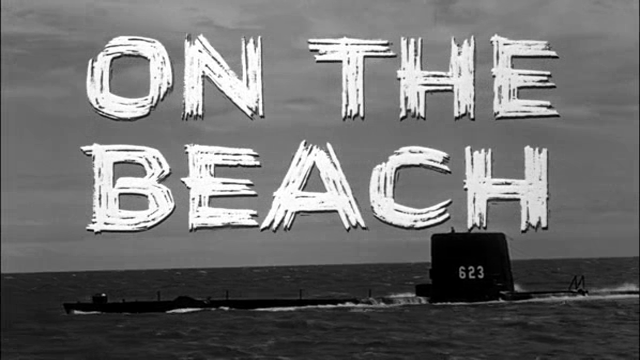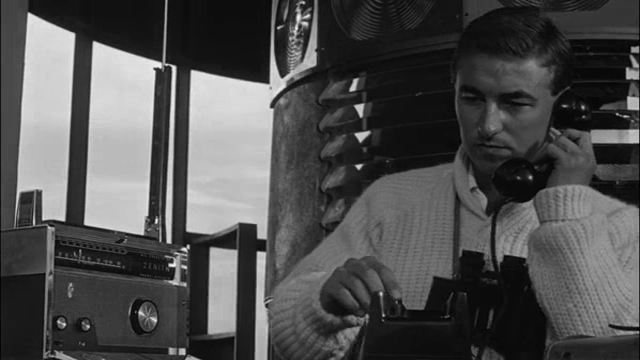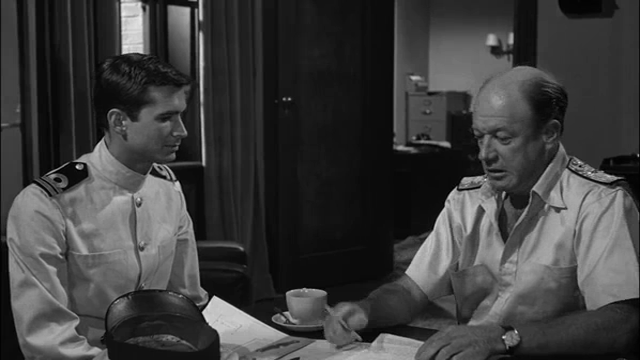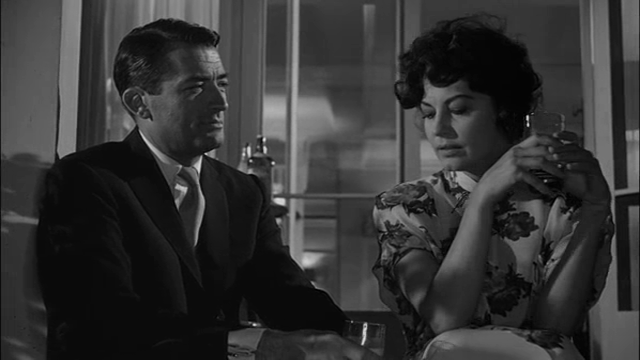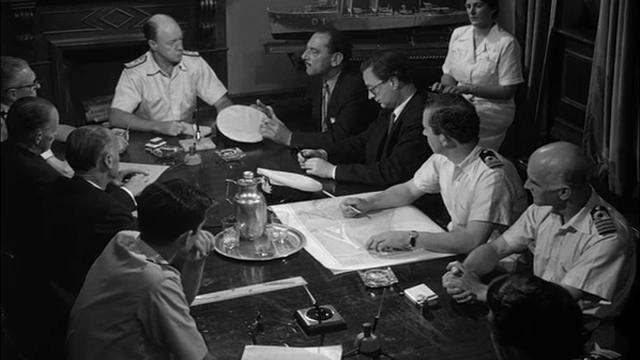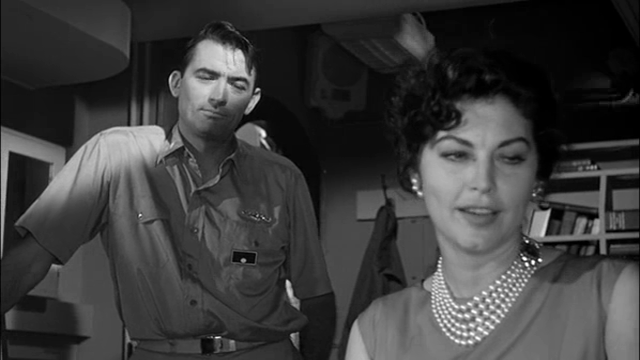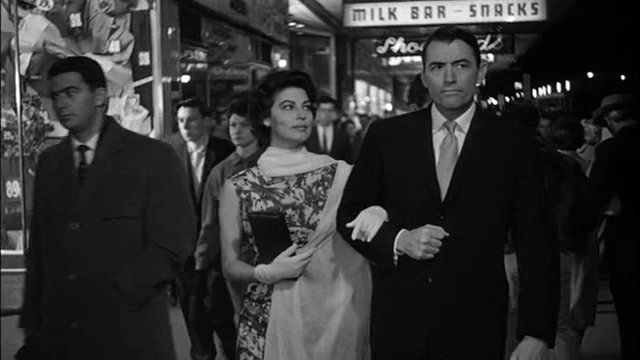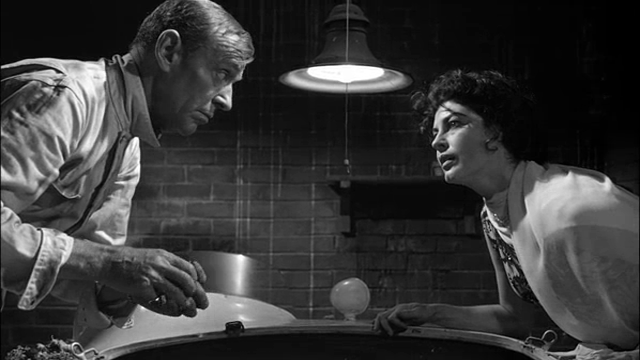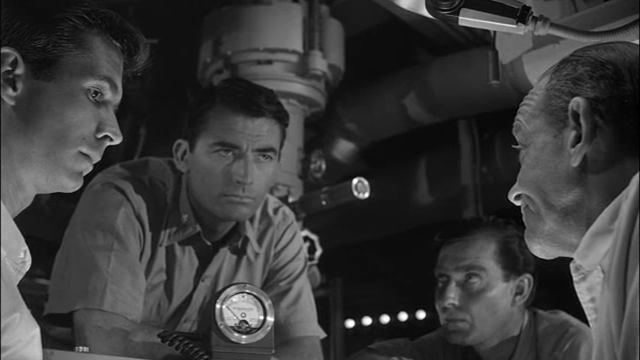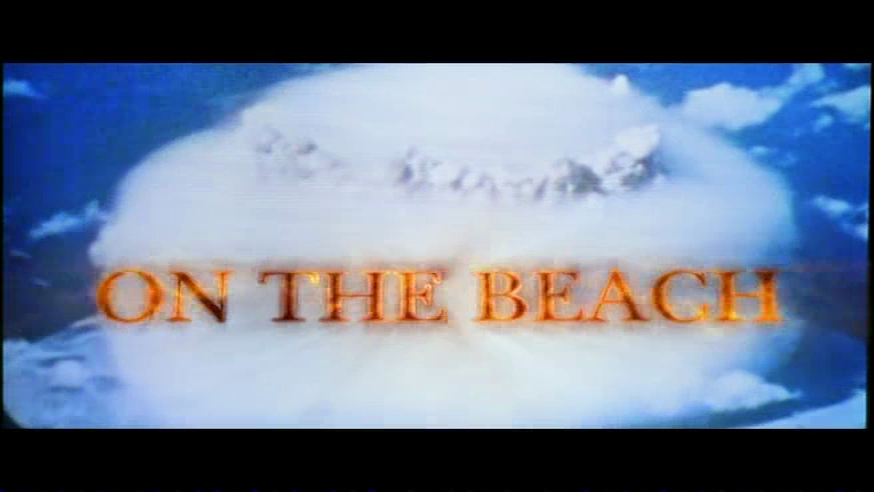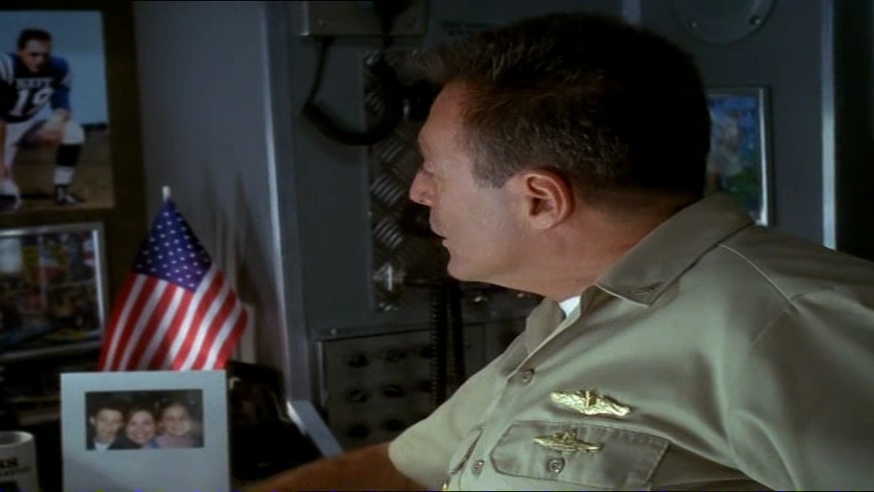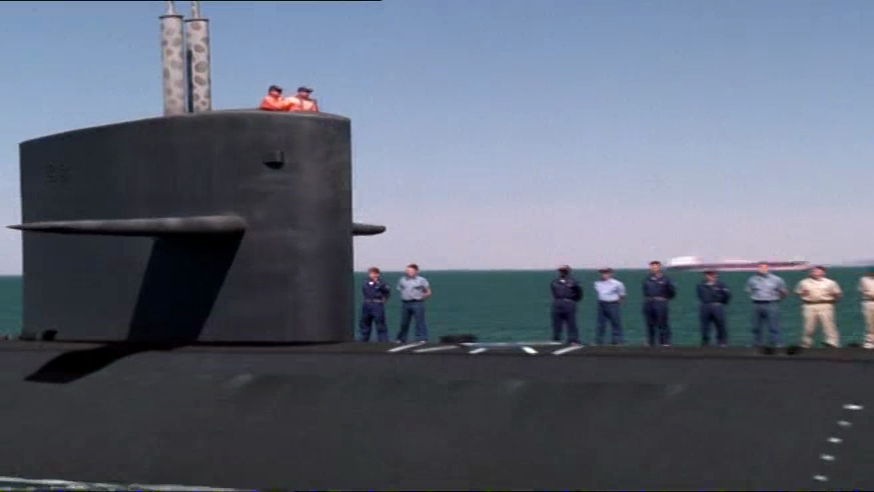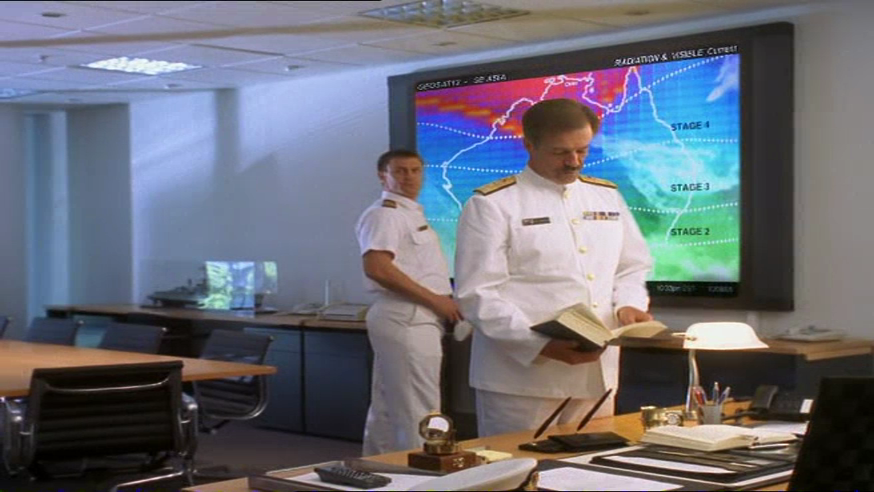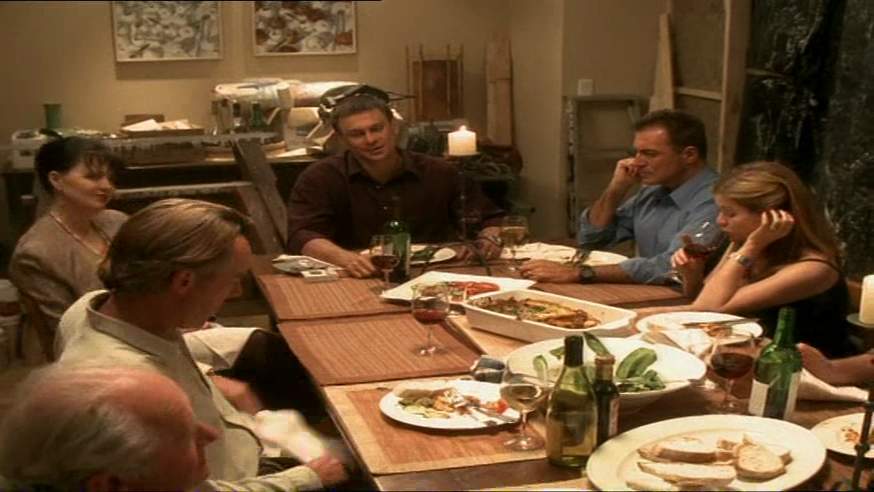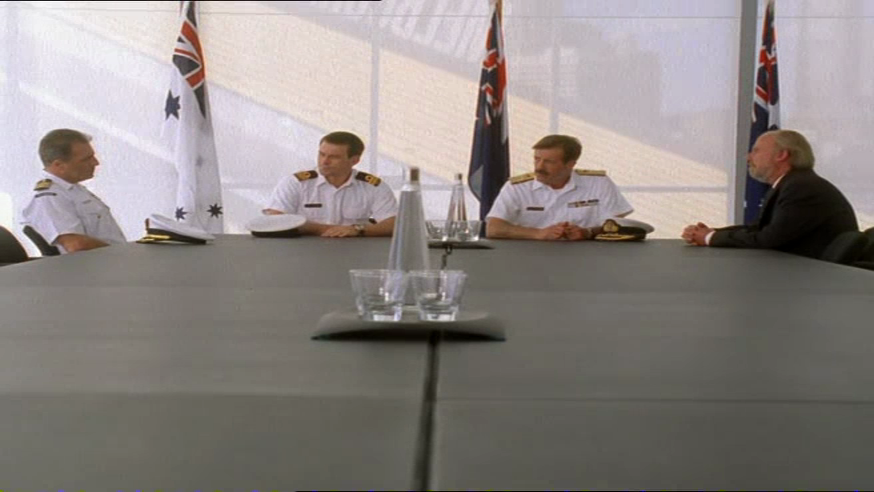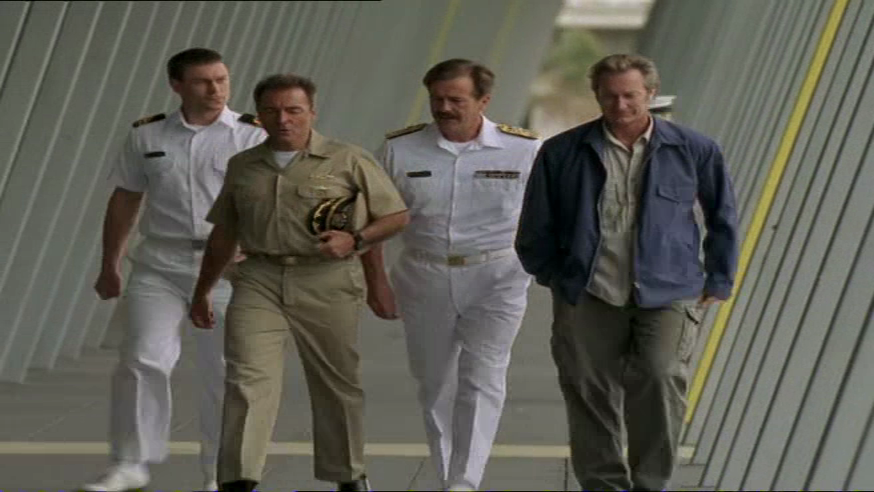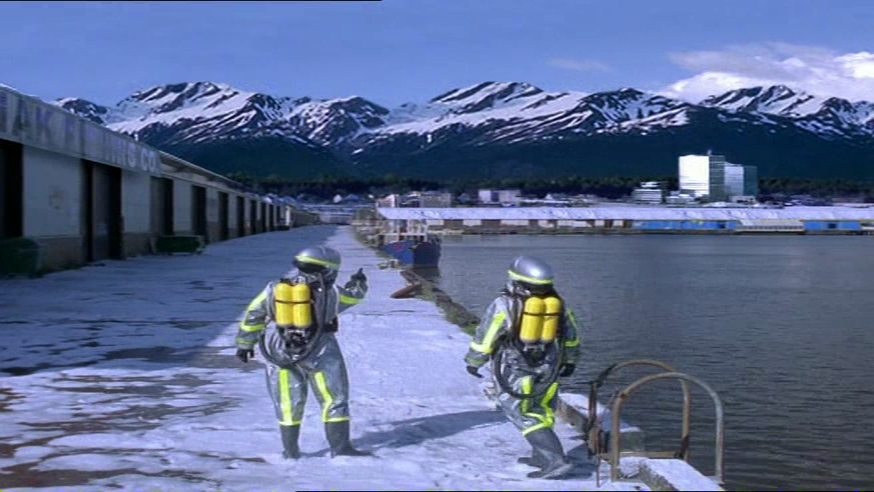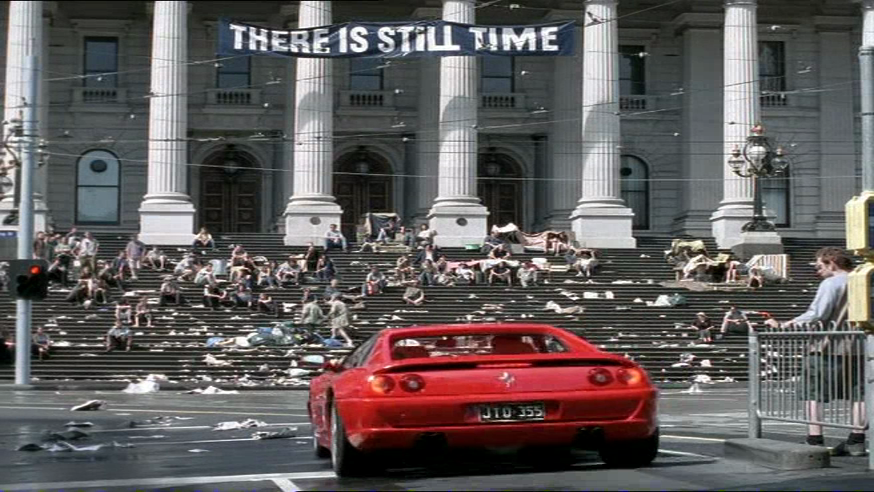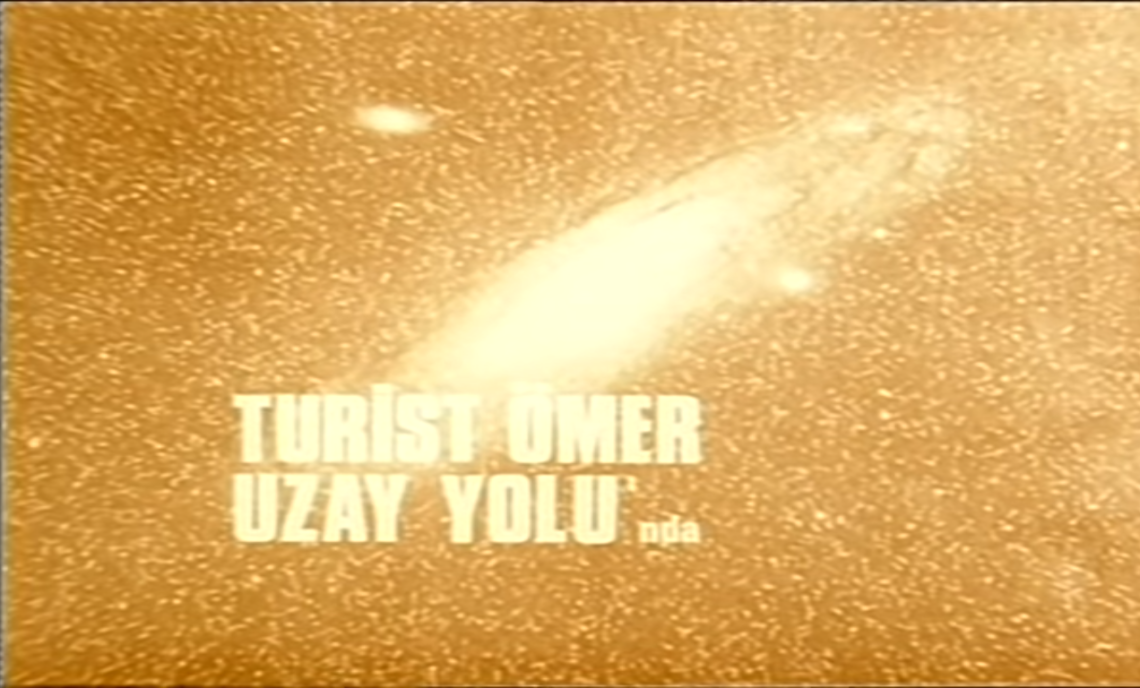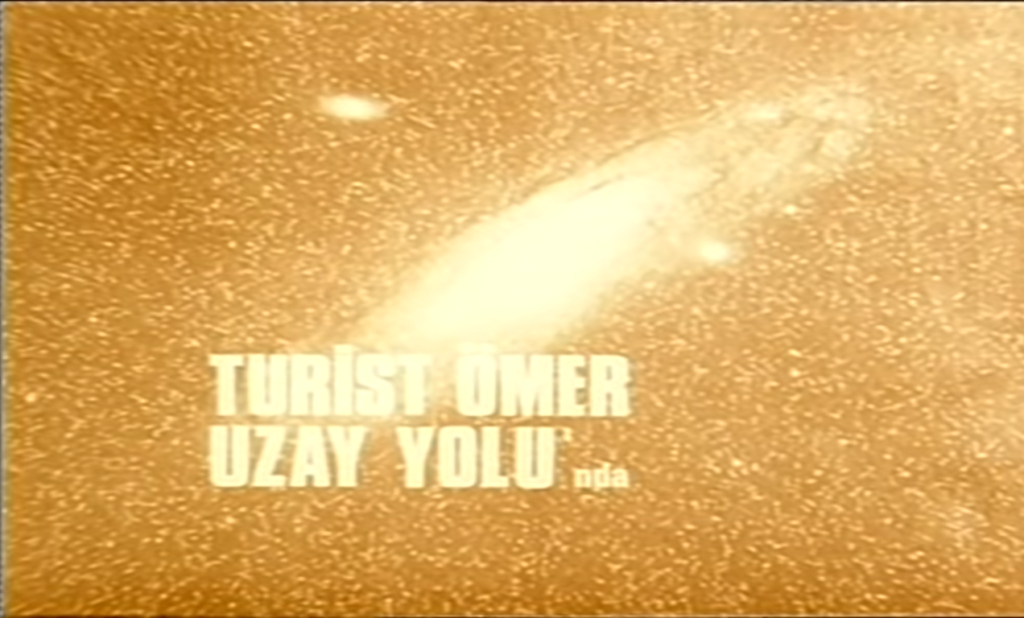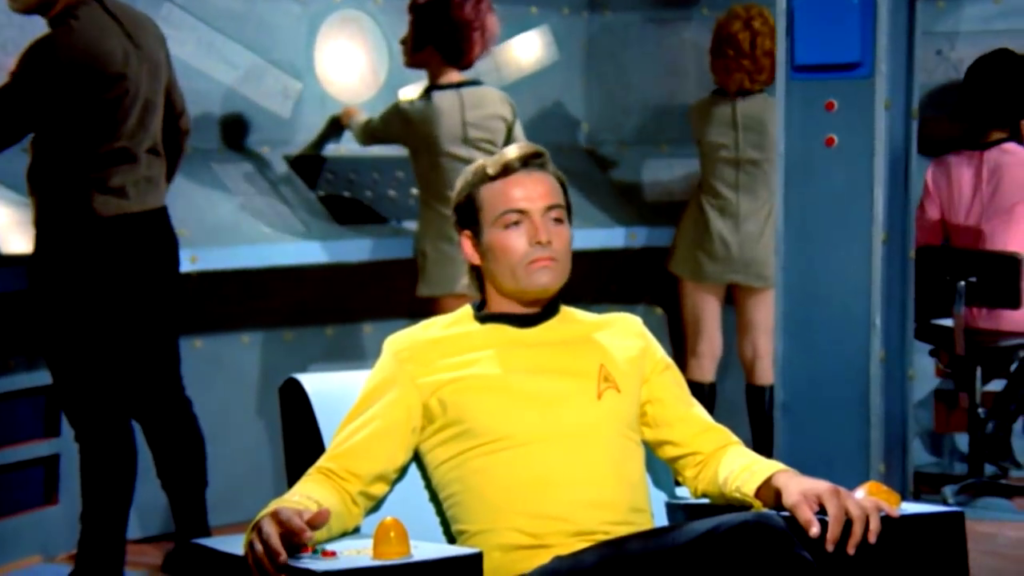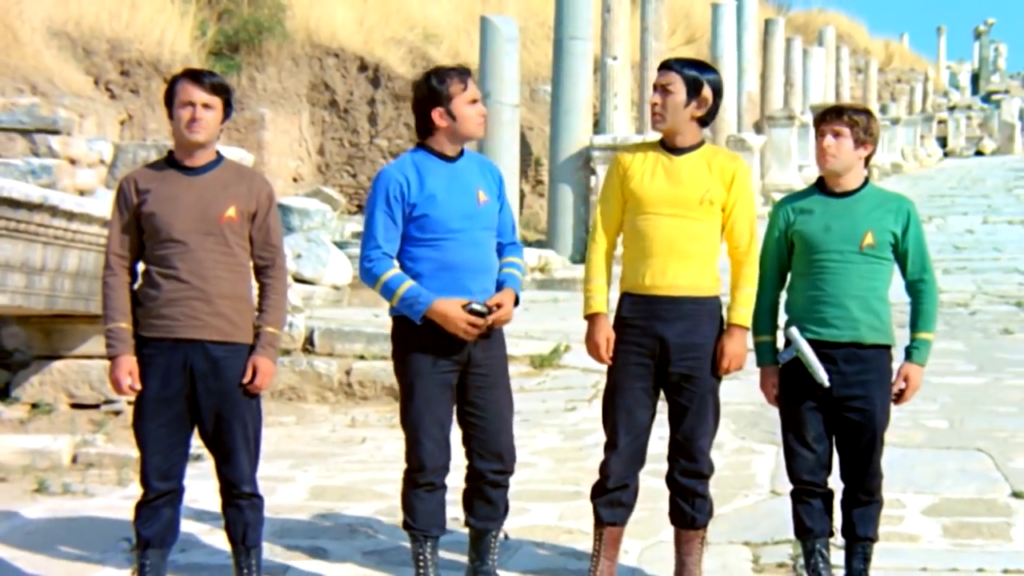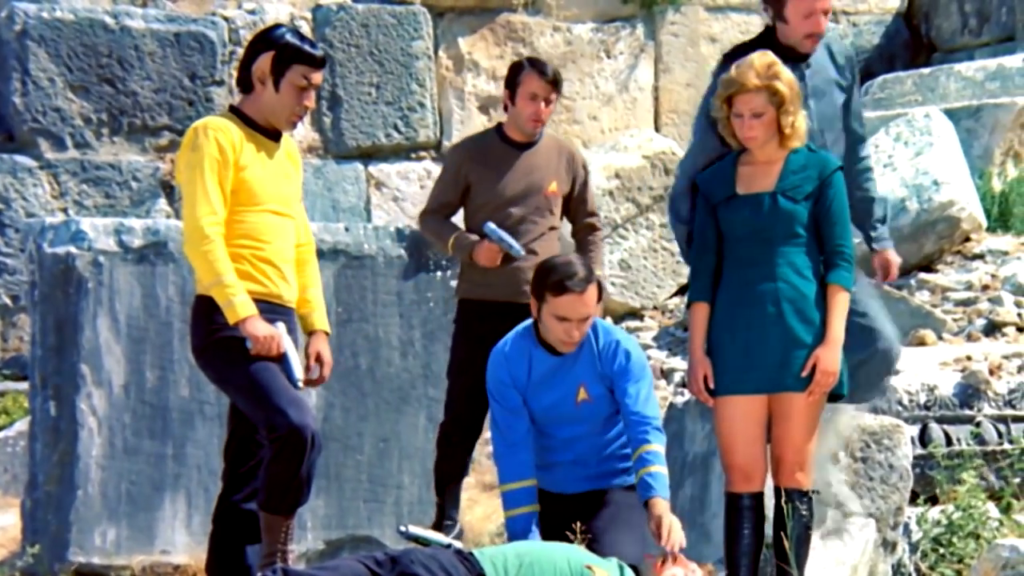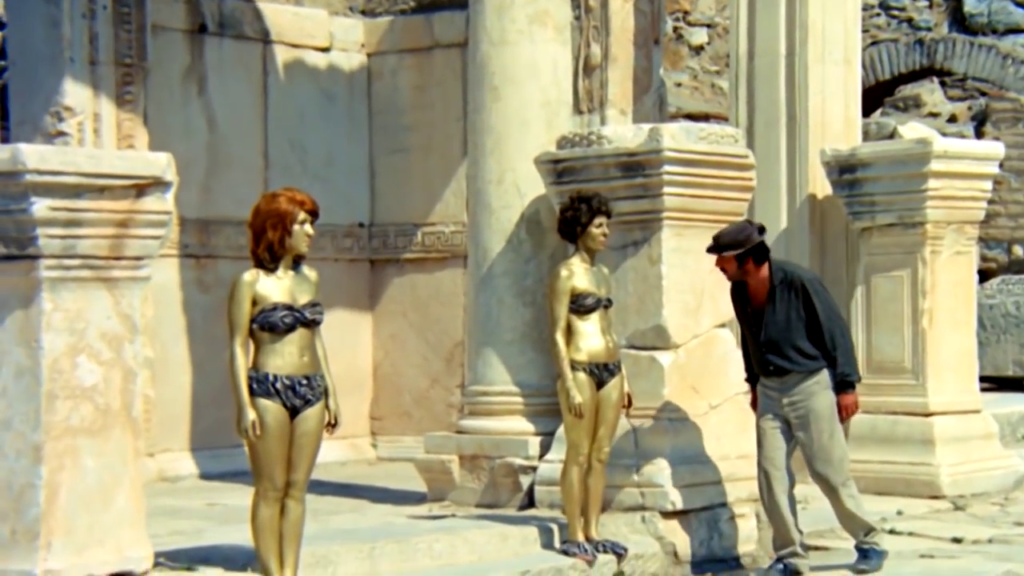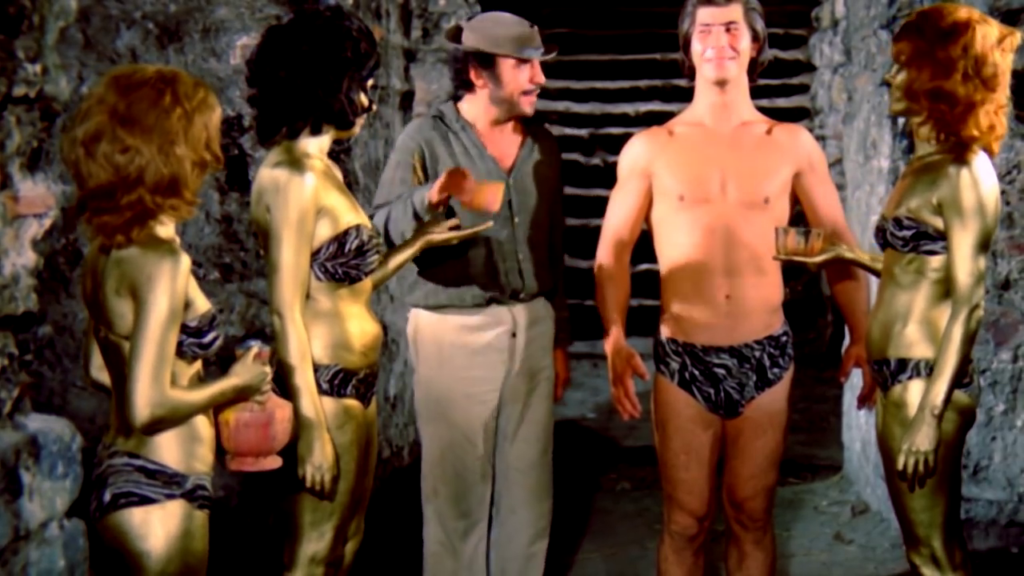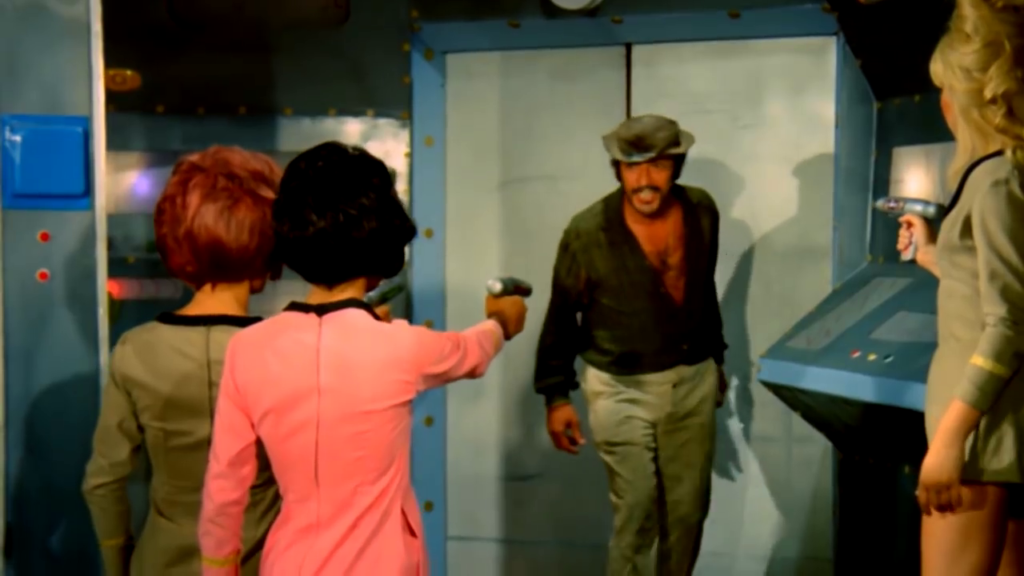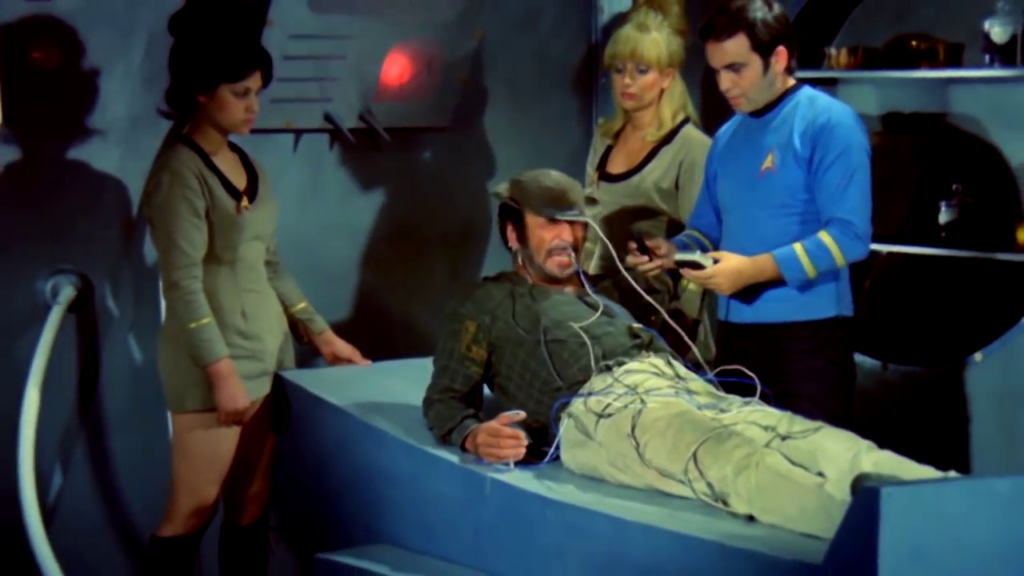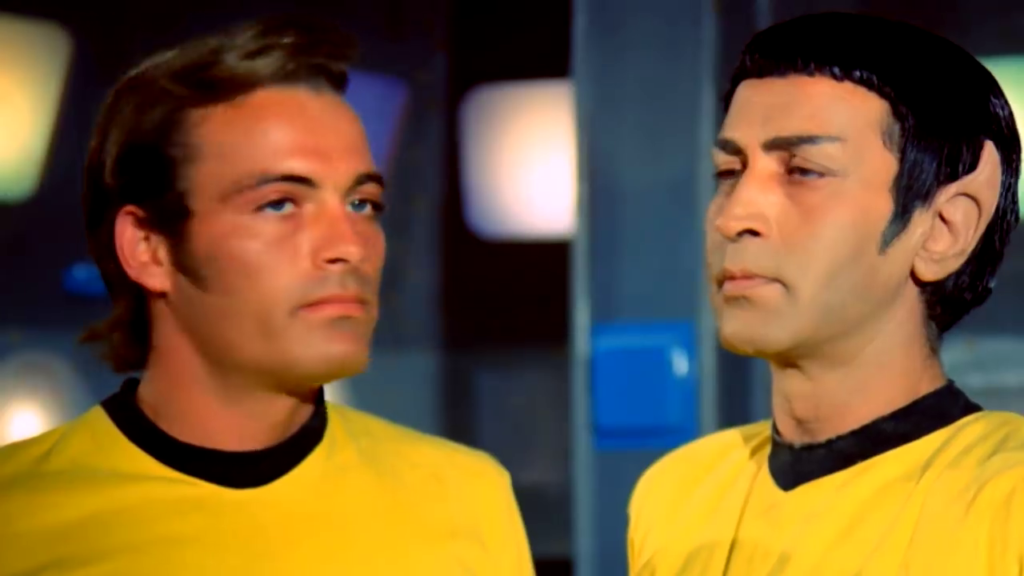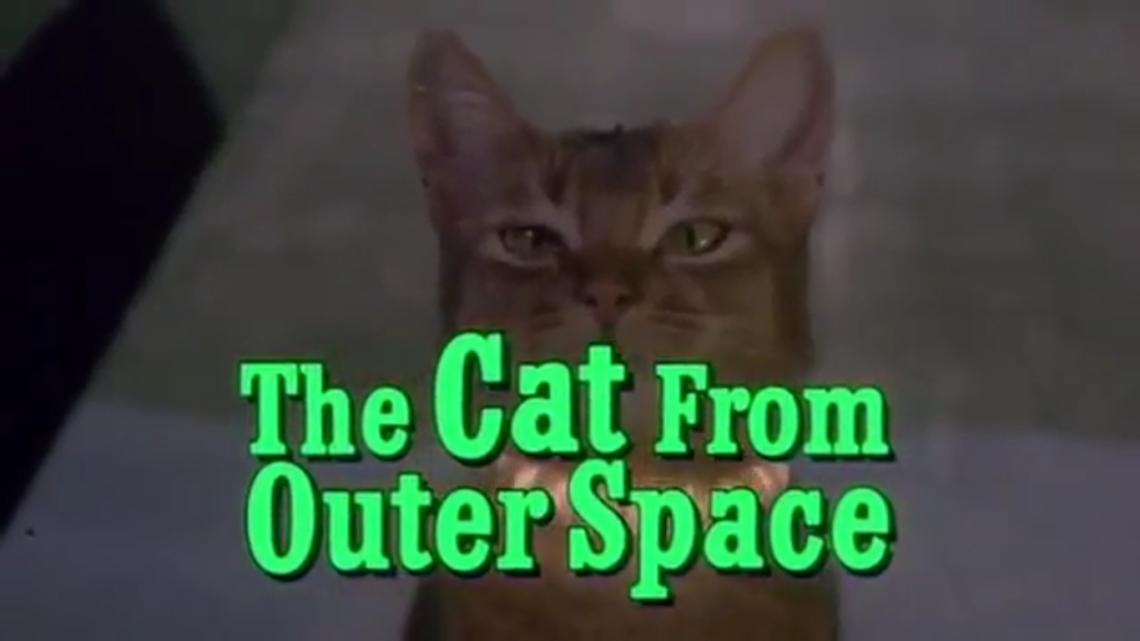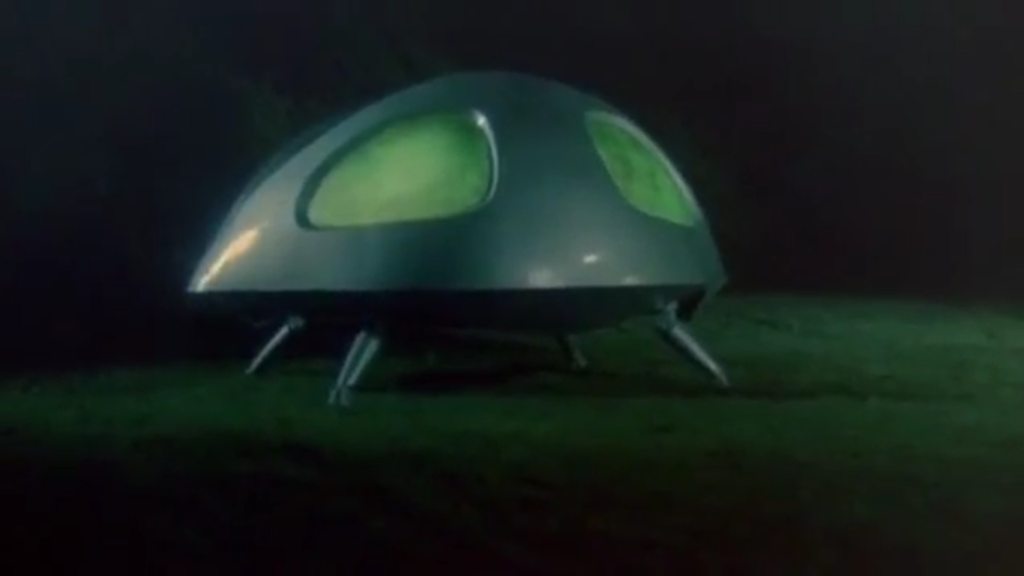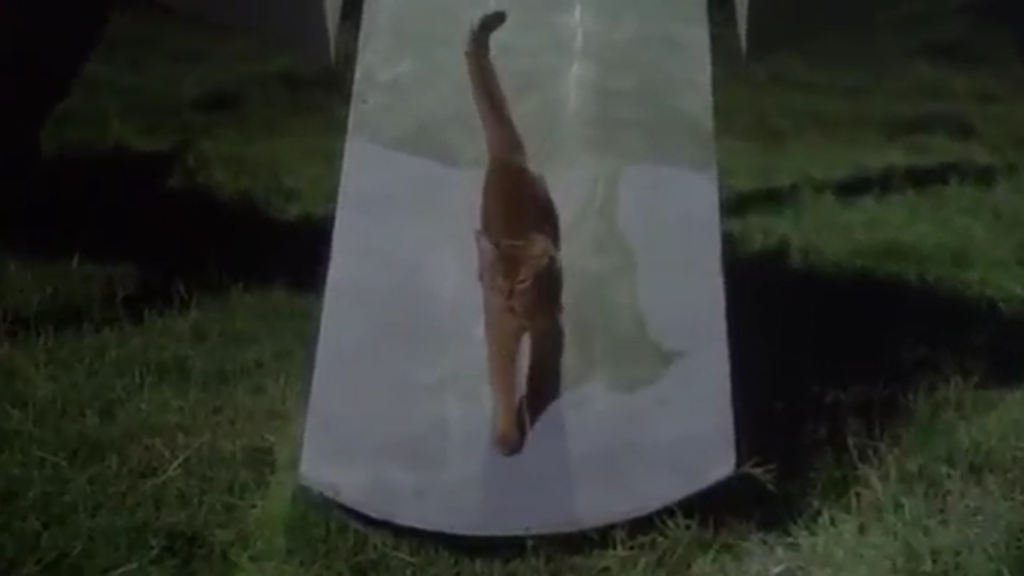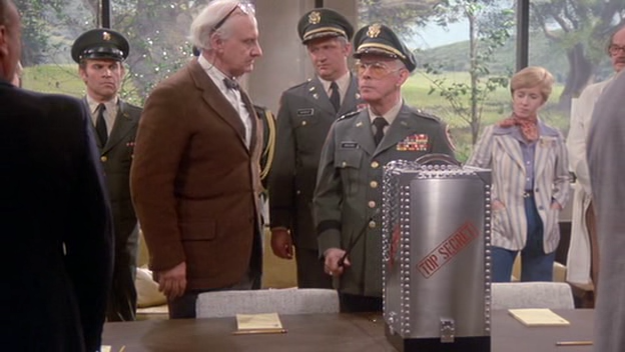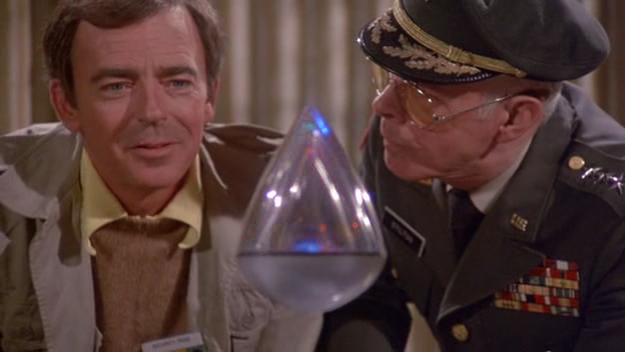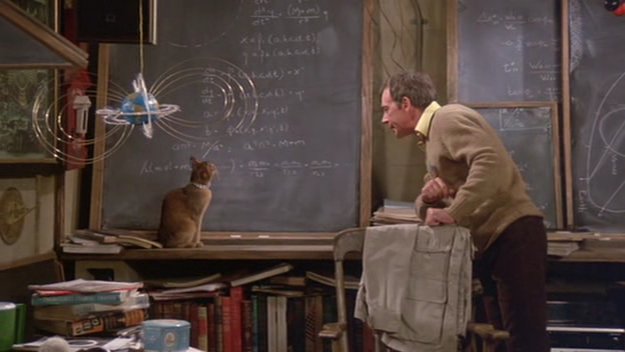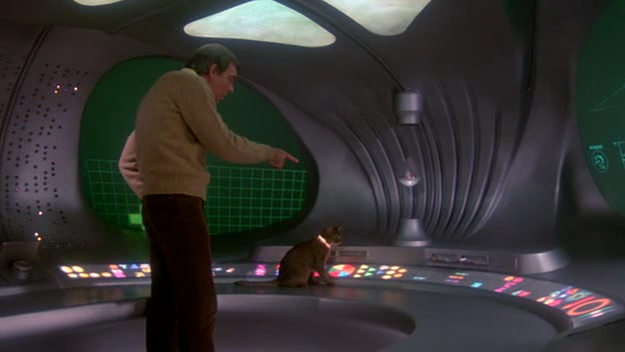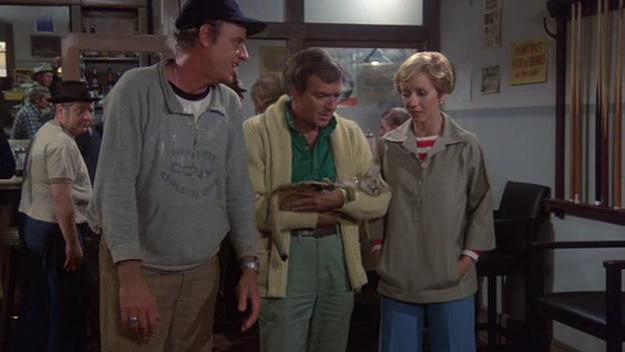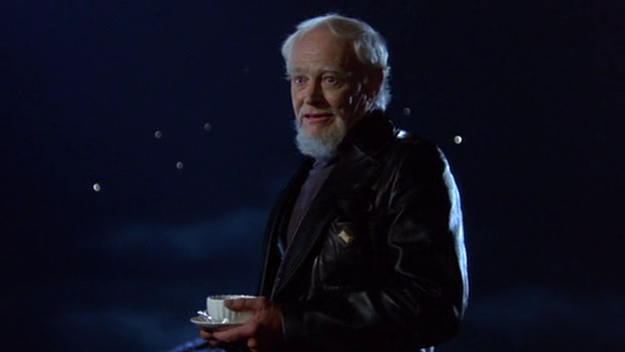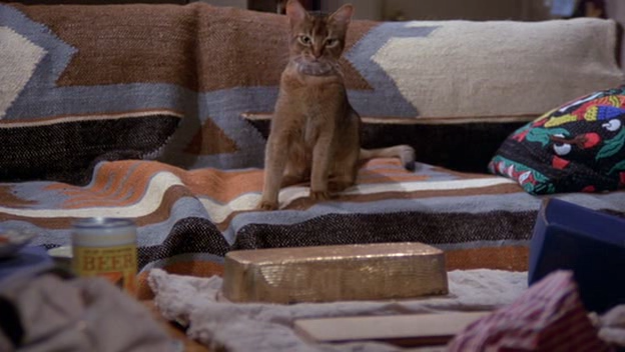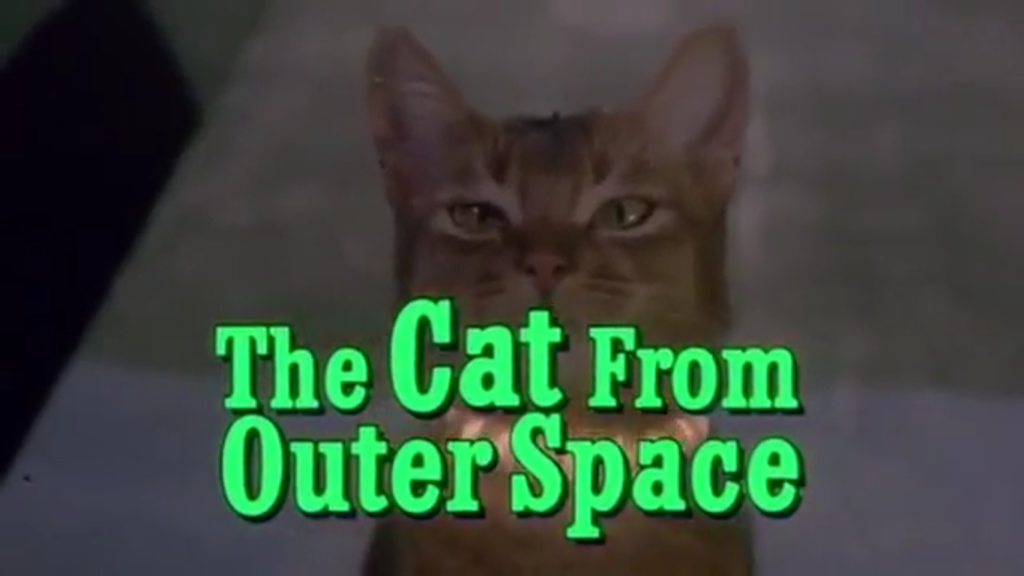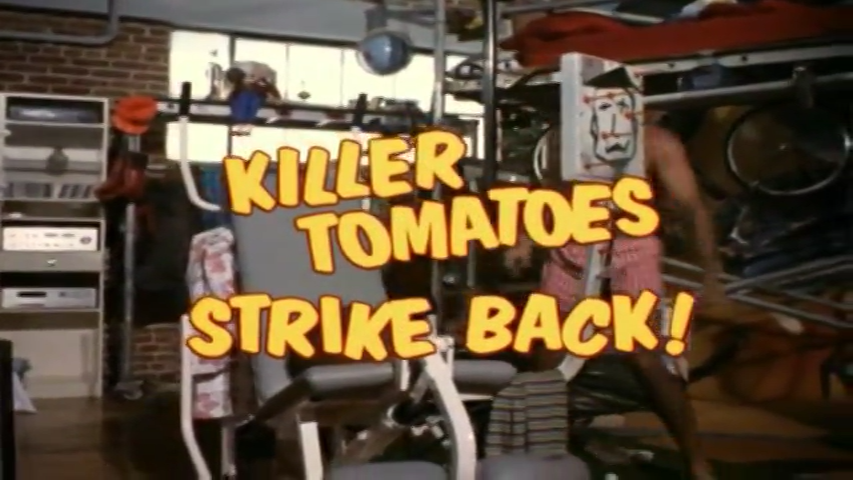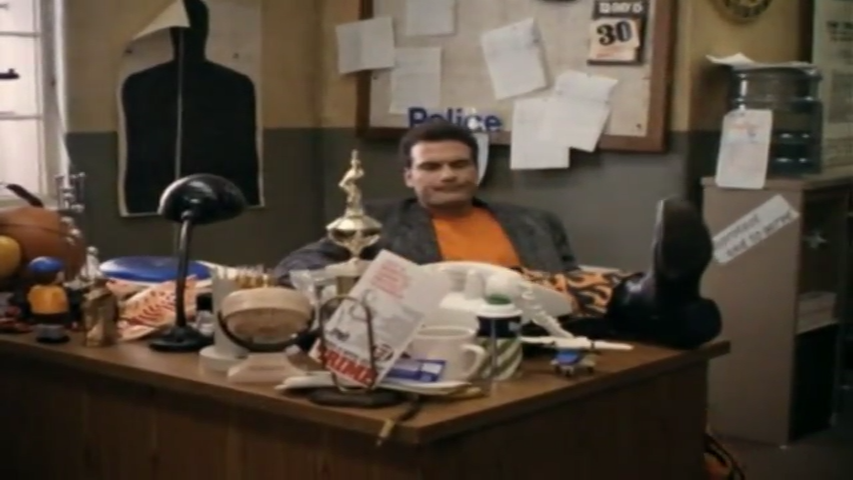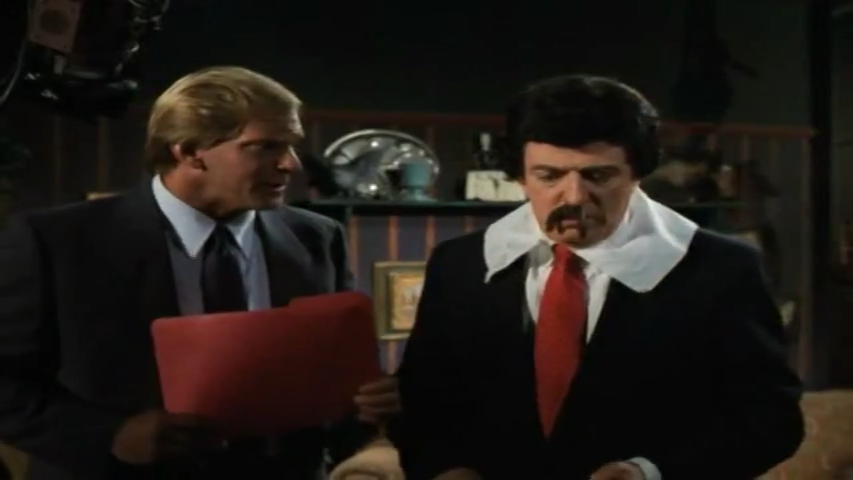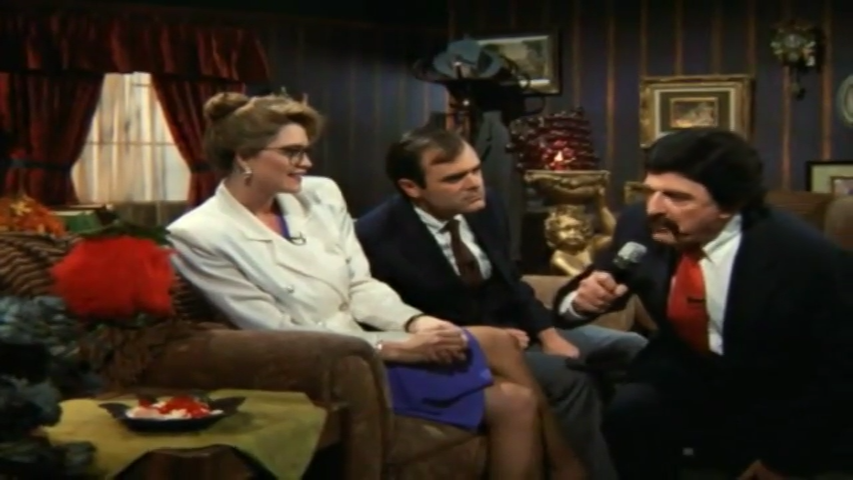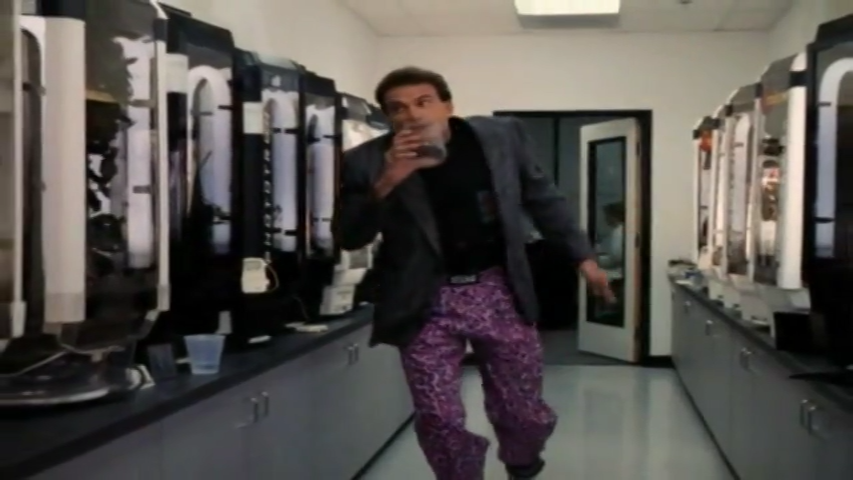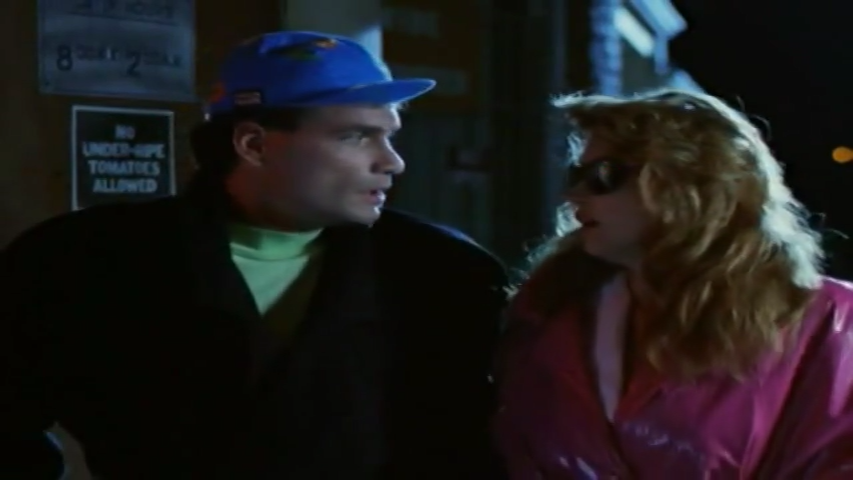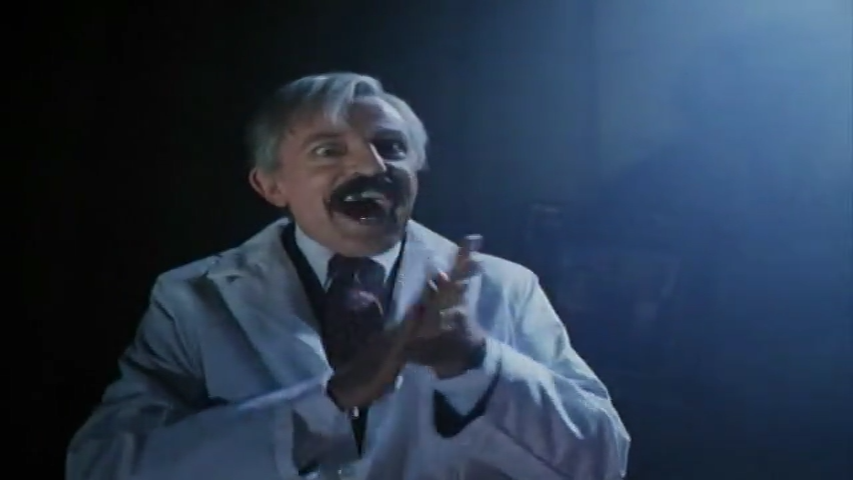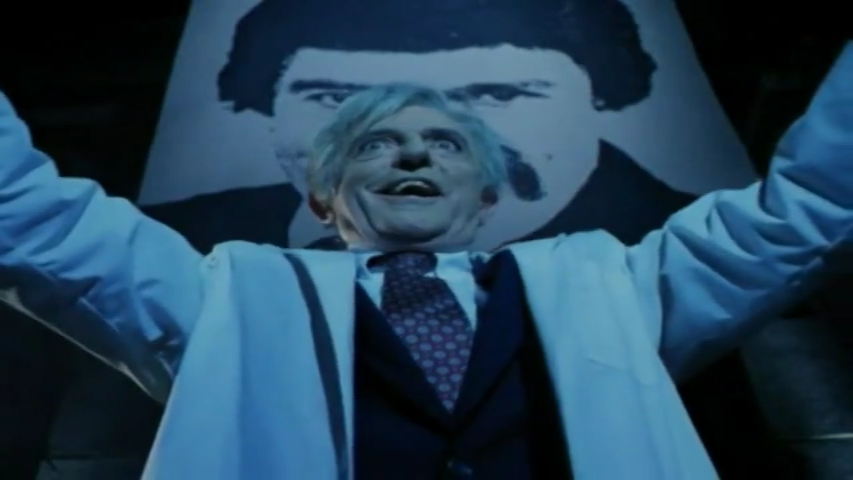-
#344 – On the Beach (1959)
On the Beach (1959)
Film review #344
SYNOPSIS: After a nuclear war renders the northern hemisphere uninhabitable, the U.S. submarine USS Sawfish docks in Australia, where the last of the world’s population have been fleeing. Dwight Towers, the Captain of the submarine, is summoned by Australian naval command to take the submarine back to North America to test a theory that the radiation may have subsided. Peter Holmes, a young officer in the Australian navy, is to join Towers on board, and invites him back to his home to spend time with his family before they head out. The cast eventually have to come to terms with the end of the world in their own ways, as the radiation slowly makes its way southwards…
THOUGHTS/ANALYSIS: On the Beach is a 1959 film about the end of the world. I have previously reviewed the 2000 TV miniseries that is a remake of the film, so I will do some small comparisons between the two, but focus on this version. The film opens with Captain Dwight Towers of the U.S. submarine USS Sawfish docking at an Australian port, in light of the Northern hemisphere being uninhabitable due to the radiation from a nuclear war. The Australian navy command has a new mission for Towers: to return to the northern hemisphere to investigate an incomprehensible more code signal which seems to be being sent from San Francisco, which should be uninhabitable. Navy officer Peter Holmes ia assigned to Towers’ submarine, and he invites Towers to his home to spend time with his family before they head out. The film focuses heavily on the relationship between the characters, and makes the film more of a drama than a post-apocalypse film.
The world that the film envisions five years in the future (set in 1964 from the 1959 production date) is a society that seemingly has carried on like very little has changed, and order still seems to be maintained, unlike the 2000 film, where society has all but collapsed. There’s some effects of the war, such as people using horses in place of cars since there’s no oil, but other than that everyone still seems to be going about their daily businesses, eiether through ignoring the inevitable, or having no idea what to do about it. This is also expressed through the main characters, as each one has a different attitude to the state of the world, such as Peter’s realism, and his wife Mary’s reluctance to talk about or hear anything about how they are all going to die. Dwight’s sheer reluctance to accept that his family was killed in the war and that they will simply be at home when he returns is very well delivered, and the complications it brings up with Moira’s (Mary’s older sister) attempts to get closer to him means that her usual tricks to seduce men, which she has no moral quabble about, make her hesitate with regards to a man who does not actually have a family, but believes he does. Another strong moment is when Peter talks with his wife about the suicide pills that the government will be offering, as he sees it as the only way to avoid a painful death for her and their daughter, and Mary finally has to confront the uncomfortable truth.
Towers and Holmes set sail to San Francisco to investigate the mysterious signal, and thereby shifting the focus of the film from the human drama to the mystery of the signal and the exploration of hope. This puts a number of the film’s threads on hold, and changes the pace a little. The film gets a bit muddled in the middle, and moving the film away from those relationships it has been building up means the viewer has to shift their focus as well. It has it’s moments, but it doesn’t offer as much drama as the opening. This is a long film as well, going for over two hours, and the scenes are very dialogue-intensive and often lacking musical accompaniment. I felt that the film needed to produce more dramatic high and low points in order to take the viewer on an emotional journey, and while the ones it does are well executed, they are inconsistently placed, and some portions of the film are forgotten in a lull of activity. The performances all-round are fairly good, but some of the Australian accents the American actors use are pretty bad. By the time the film ends you see each of the characters having to make tough choices about how they approach the end, and the way the character’s have been built up gives their actions a powerful significance. There’s very little said about the nuclear war; it just seems like it’s a thing that happened and everyone has just accepted and moved on, while I think exploring this in more depth would have helped fill in the more quiet and less emotional scenes of the film. On the Beach pushes some boundaries in terms of exploring the inner traumas of people in the face of certain death, and offers a variety of characters in a well-defined world. It does however, fall short in terms of pacing and enough content to justify its runtime, and the human drama is done in much more well-rounded films, meaning overall it’s a mixed bag.
-
#343 – On The Beach (2000)
On the Beach (2000)
Film review # 343
Director: Russell Mulcahy
SYNOPSIS: After nuclear war renders the northern hemisphere uninhabitable due to lethal radiation, Australia becomes the last place on Earth where life is sustainable. However, the radiation is slowly moving southwards, meaning there is a few months left at most for everyone. Captain Dwight Towers of the USS Charlston, a U.S. submarine that is been beneath the waves to avoid radiation, is called to Australia to take part in a mission to return to the northern hemisphere to test a theory that there may be areas where it is safe to live…
THOUGHTS/ANALYSIS: On the Beach is a 2000 TV miniseries based on the 1959 film of the same name, which in turn was based on a 1957 novel of the same name. It begins with a series of news reports that provide some backstory on what has happened: a nuclear war between the U.S.and China broke out which lead to the northern hemisphere becoming uninhabitable due to the lethal radiation.This has lead to people moving en masse to Australia, which has avoided the radiation thus far. However, the radiation will eventually blow southward in a matter of months, meaning that nowhere will be safe. Captain Dwight Towers, the commander of the U.S. submarine USS Charlston, is docking the sub in Melbourne, having avoided the radiation since their sub has been underwater. Towers is given a new mission to return to the northern hemisphere and check on the radiation levels based on a new – albeit optimistic – theory that the radiation may have subsided. He is joined by Dr. Julian Osborne, a scientist who thinks the whole plan is a waste of time, and Australian navy officer Peter Holmes. Peter invites Dwight to his home before they depart, and the majority of the opening part of the film focuses on establishing the characters of Dwight, Peter and his family, their relationships to one another, and their varying attitude towards the oncoming end of the world. The human drama of Dwight’s loss of his family, the love triangle between Moira (Peter’s sister-in-law), Julian and Dwight, and Peter’s family is a major focus of the film, and it takes a long time to build up and get the viewers familiar with them so you can invest in their emotions and attitudes. It is very slow-paced, and can be difficult to pay attention to at length because of it.
The story offers a small glimmer of hope in the quest to venture to the northern hemisphere and find a place where the radiation has fallen enough so that people can live again. They also find a signal being transmitted from Anchorage, Alaska, so that is where they head. The film builds up this hope as the crew of the submarine slowly make their way to the signal’s origins in hope of finding survivors, but when it arrives all of that hope is dashed when they find lethal radiation there. The Captain and his first officer venture onto the shore in radiation suits to try and find the origin of the signal, but find it is a broadcast that is transmitted automatically by a laptop that is activated by a solar power cell as the sun shines on it every day. This is quite a come down, as this was more or less the last hope for humanity, and the rest of the film is a slow coming to terms with the inevitable death of everyone. Although the pacing is slow, it manages to create a bit of an emotional rollercoaster, as specific scenes raise hopes, and other scenes bring everything crashing down hard. It’s definitely a strength of the film to take the viewer on this ride, and is really down to the time it takes to invest in these characters.
The film does a good job of painting a depressingly fatalistic picture: the crowds look dull and bleak, and what little hope there is at the start of the film is slowly but ultimately crushed. The last portion of the film really goes into full depressing mode, as all hope is exhausted, and everyone has to accept the fact that they are going to die as radiation sickness begins to affect everyone. After building up all the character’s and their relationships, the film uses that investment to really give the film a huge impact. Each character gets to choose how they want to die; and it’s not much of a consolation, but that’s really all there is at this point. Peter and his family use a euthanising drug that has been distributed by the government so they can all die together, Julian drives his sports car around a race track, and deliberately crashes it, and the crew of the USS Charlston set sail back to their home port of San Francisco, knowing they will not make it, but wanting to die at sea. Moira heads to the beach alone after Dwight decided to go with his crew in the submarine, but it turns out he changed his mind at the last minute and the two share some wine overlooking the sea as the end will inevitably set in. Like I say, it’s all very emotional and depressing, and I don’t recommend watching it if you’re feeling down, because it certainly won’t help. It’s an emotionally exhausting experience but I suppose that makes it successful in getting the viewer invested in the characters. The setting of a post-apocalyptic Australia is rendered pretty well, with general order barely holding, and the effects are pretty decent too. It is a TV movie so it’s not going to be overly special, and the acting is sometimes a little off, but nothing too severe. The music adds to the dramatic tone of certain scenes too, and overall the production is well considered and decently executed. I would recommend watching it in three parts like the original miniseries, as the full three-hour experience will be draining and an emotional endurance, but it is perfectly watchable. There’s nothing particularly memorable about the characters themselves, but the way it builds their relationship to one another and the tone of its key scenes still allows the viewer to appreciate their human sensibilities and their varying attitude to the inevitable.
-
#342 – Tourist Ömer Visits Star Trek (1973)
Tourist Ömer visits Star Trek (1973)
Film review #342
Director: Hulki Saner
SYNOPSIS: The U.S.S. Enterprise is visiting Professor Krater on a remote planet to collect some reports. While they are their one of their crew is killed, and Captain and his crew begin an investigation. The Professor wants them off the planet, and so uses a machine to transport a man to the planet who he will claim to be the murderer. Meanwhile on Earth, Ömer is being forced into a shotgun wedding when he is transported to the planet and taken into custody by Spock. However the investigation begins to get ever more complex, and even Spock’s patience begins to wear thin with the hyperactive Ömer running amok on board the Enterprise…
THOUGHTS/ANALYSIS: Tourist Ömer visits Star Trek (Turist Ömer Uzay Yolunda) is a 1973 Turkish sci-fi film and the eighth in the series of films centred around the hapless roamer Ömer, as he causes trouble wherever he ends up. This time, he is about to be forced into a shotgun wedding with a woman who he says he barely knows. Meanwhile, the U.S.S. Enterprise is visiting Professor Krater and his wife on a remote planet to collect some reports from him when one of there crew is mysteriously killed. They have to stay and investigate, which irritates Professor Krater, who decides to use a time machine to bring someone from the past who he can blame for the murder. Fortunately (or unfortunately) for Ömer, that person is him. Krater brings Ömer to Kirk and Spock as the murder, and they take him on board the Enterprise into custody. Obviously, the first thing that should be mentioned is that this is not an official Star Trek film (although technically it is the first film in the Star Trek franchise), and none of the original cast, crew or writers are involved in this. Then again, neither is it a parody, since that would have changed the names of the characters and such. The film also steals the footage of the Enterprise in space from the television series, which shows it isn’t too concerned with any repercussions from using the Star Trek name. The story itself also isn’t anything too original, with plot points taken from a number of different episodes and recreated. Certain scenes will be very familiar to Star Trek fans as they are pretty much identical to those found in said episodes. So it definitely feels like a Star Trek episode, but mostly because it copies them directly.
Ömer is the typical fish-out-of-water character, as he tries to navigate the future he has found himself transported to, and generally make a mess of everything he touches. A lot of the time though, he is absent or in the background, as the film typically plays it straight and acts as a proper Star Trek episode. The actors that portray the characters do their bit to capture the original feel and look of said characters: Kirk has that sense of presence and swagger, and Spock has the Vulcan stoicism, and the actor that plays him is able to do the trademark eyebrow raise very well. Some of the acting is a bit rough, but that almost adds to the authenticity of replicating the original series. A lot of the humour is derived from Ömer being annoying and testing Spock’s Vulcan patience to the absolute limit. Ömer gets to play about with some futuristic gadgets and use them to basically annoy Spock again, so the film makes use of the setting for Ömer’s character to be himself, and it all unfolds pretty much how you would expect it to. Some of the humour will be lost on people unfamiliar with Turkey and its culture, but there’s not too much of it, and again a lot of the focus of the film is on reproducing an authentic Star Trek experience.
This film clearly doesn’t have much of a budget or the technological means to create any spectacular special effects. The same three or four sets are used throughout the whole of the film and don’t offer much variety, although the on-location filming looks rather nice. The bridge of the Enterprise looks nothing like the original, and clearly they had to make it with what they had. This film is definitely a product of its time; when filmmakers could get away with using another’s intellectual property without being found out and sued into the ground. It does feel authentically like a Star Trek film not just because it steals everything from the original without making it into a parody or satire, but because the limited budget reflects the similar constraints that the original series had. The film focuses on being more Star Trek film than Tourist Ömer, with the titular character only serving as a minor complication or annoyance in the plot. Given that the plot itself is mostly cobbled together from episodes of the series, there’s not much new for a Star Trek fan to see either, although they may enjoy the references. Overall: pretty harmless, but pretty pointless.
-
#341 – The Cat from Outer Space (1978)
The Cat From Outer Space (1978)
Film review #341
Director: Norman Tokar
The Cat From Outer Space (1978)
Film review #341
SYNOPSIS: An alien ship lands on Earth in order to make repairs. The pilot, Zunar-J-5/9 Doric-4-7, is a cat from another planet where cats have evolved as the dominant species. before he can make repairs, the U.S. military finds the ship and takes it to a base to inspect it. They gather top scientists to try and understand the strange device they find aboard, but none of them have a clue. However, Dr. Frank Wilson manages to produce a theory that is quite close to how it actually works, even though nobody believes him. When Zunar hears Jake’s theory, he decides to trust him and enlist his help to repair his ship and get him back home.
THOUGHTS/ANALYSIS: The Cat from Outer Space is a 1978 Disney sci-fi comedy film. The film starts off with a U.F.O. landing on Earth, and a cat leaving the ship (hence the title of the film I suppose). A local farmer sees the ship land and reports it, leading to the U.S. military taking the ship to a base for analysis. They take a device they find aboard to a meeting of scientists they have convened to try and work out what it is. None of the scientists can offer much of an explanation for its levitating capability, apart from one Dr. Franklin (Frank) Wilson, who believes it resonates with the universe’s harmony or something. Zunar, who is listening in on the meeting, notices that Frank is closer than any of the other scientists, and decides to enlist his help in repairing his ship. As you might imagine, Frank is quite shocked when the cat starts talking to him, but is persuaded to help him when he agrees to share certain mathematical discoveries with him. Frank decides to call him Jake and the two set about getting Jake home. The story is rather simple and threadbare: there’s nothing more to it than Jake getting his ship repaired and going home, albeit with a few minor inconveniences along the way. Being a film aimed at kids, it’s not very threatening or complex, and focusing on the film being a comedy means it doesn’t need too much explaining, and avoids engaging in too much scientific jargon. Although the jokes and humour are often aimed at children, there are some jokes for adults that although are easily missed, which means that there is something in it for the whole family.
In the first part of the story, we learn enough about Jake/Zunar to establish his background: he is from a planet where they did not need to evolve beyond cats thanks to their special collars that allow them to communicate telepathically and move things via telekinesis. Essentially, the collar allows Jake to do everything, meaning there’s not too many problems it can’t solve easily, which makes any threat and peril in the film quite trivial. The film also uses it to show off a more fun side such as making people levitate and such, which will no doubt stimulate children’s imaginations. As the film progresses, more characters start to help out Jake and Frank, and the soldiers that are after them provide a change of pace with their more slapstick antics. The second part of the film revolves around them needing one hundred and twenty thousand dollars for some gold to repair Jake’s ship. They come up with a plan to raise the money by betting on football games, using Jake’s telekinetic powers to influence the games in their favour. If you think about it, it’s a bit unethical to be fixing games in this way, but it’s still probably more child-friendly than robbing a bank or such, so you can let it slide a little. The betting establishment they place their money with is portrayed as a little crooked, so one can conclude that they are not taking money from any reputable business or person, so I guess that makes it okay? Again, there’s a little hiccup in their plan when Jake is knocked out and winning their money gets a little more difficult, but it gets resolved without too much drama in the end.
Throughout the film, a spy follows Jake and Frank around, gathering evidence of the collar’s special powers, at the start of the third act, he presents the evidence to his boss, Mr. Olympius, who wants that collar so he can literally rule the universe (his words, not mine). This last part feels very disconnected from the rest of the film in that this villain isn’t mentioned or referenced at all anywhere in the film until the beginning of this part. His motivations to just conquer the universe also lack credibility, and it’s never really mentioned who he is: I think he’s a crime boss of some sort? Anyway, he kidnaps Dr. Liz Bartlett and her cat and demands Frank hands over the collar in exchange for them. Jake needs to head to his ship and fly it off to be rescued, otherwise he will be stranded on Earth, so Frank goes after them alone, only for Jake to return and help out, effectively eliminating his chance of rescue. The finale consists of a chase between Mr. Olympius’s helicopter, and an old plane piloted by Frank that is kept afloat via Jake’s collar, and it’s quite well done. There’s a mix of actual footage and studio special effects that are blended together fairly well for the time, and it goes on for quite some time, pacing itself with the changing dynamics of the chase. But as mentioned, it does come a bit out of nowhere, and probably would have been cooler if they were chasing the helicopter in Jake’s spaceship. While the effects are nothing spectacular for the time, they serve their purpose well and manage to pull off some decent stunts, which adds a bit of excitement and adrenaline to a film that really needs it. The film ends with Jake taking the pledge of allegiance as he becomes a U.S. citizen seeing how he can’t go home, and everyone ends up happy. Overall, it often feels like The Cat from Outer Space is doing the bare minimum to piece a film together. Like the title itself suggests, it is very much to the point, and doesn’t seek to develop much beyond it. The characters are rather forgettable, the story is without intrigue or excitement for the most part, and visually looks rather dull. It certainly doesn’t hold up, and everything about it feels outdated. The humour is fairly harmless, and while it throws in a few jokes for older audiences to qualify it as a family film with something for everyone, it never really pushes any boundaries or makes itself stand out. All in all, a rather forgettable experience.
-
#340 – Killer Tomatoes Strike Back! (1990)
Killer Tomatoes Strike Back! (1990)
Film review #340
dir. John De Bello
SYNOPSIS: Detective Lance Boyle is investigating a murder when the police Chief suspects the work of killer tomatoes. Boyle is highly sceptical about it, and this is made worse when he has to work with tomatologist Kennedy Johnson. Meanwhile, Professor Gangreen, the creator of the killer tomatoes, has a new scheme to conquer the world…
THOUGHTS/ANALYSIS: Killer Tomatoes Strike Back! is a 1990 film and the third film in the “Killer Tomatoes” series. The series has always been a spoof or parody of the b-movie monster genre, and this film is no different. The film starts off with a murder parody of the “Halloween” films, which is pulled off pretty well. Then we get to see police detective Lance Boyle, a childish wild-card who doesn’t seem to take anything seriously, who is called to investigate the aforementioned murders. The chief of police believes that killer tomatoes involved, and has tomatologist Kennedy Johnson brought on the case to help Boyle, which he is less than pleased about, as he doubts there is even such a thing as killer tomatoes. Meanwhile, Professor Gangreen, who created the killer tomatoes, is disguising himself as a talk show host called Jeronahew, and intends to brainwash everyone who watches his show. The story of the film is split between the two perspectives, with Boyle and Johnson fending off various tomato attacks, and Gangreen and his assistant Igor trying to fulfil their plan to conquer the world. In doing so, the film uses typical plot elements, with Boyle and Johnson starting off as antagonistic while eventually developing a romantic attraction, but as a parody film it has to use these tropes to mess around with them. Killer Tomatoes Strike Back! walks the line between making a genuine attempt at a film, while also undermining the tropes it relies on a lot more so than its predecessors, which played it mostly straight with treating the killer tomatoes as a genuine threat, which showed the ridiculousness of the genre. Without that straight-laced parody the whole concept seems a bit lost and muddled. here’s also not much progression with the plot, just a bunch of killer tomato attacks that are all the same and don’t really result in anything. This film doesn’t add anything to the “killer Tomatoes” mythos, but there’s not much mythos needed in the “killer tomatoes” series. That said, the series has developed a structured world and history given that it is based on killer vegetables.
Boyle’s character is a bit all over the place: in the opening sequence we see him get out of bed and partake in a range of silly activities. There’s definitely a parody of Lethal Weapon between him and the other police officers, but nothing too specific: he’s just a laid back cop who likes to flout the rules and his partner and the Chief are a little more straight-laced. The most prominent character has to be Professor Gangreen, who is again played by John Astin, who gives such an over-the-top and dedicated performance that he really steals the show. It’s no surprise that the protagonist’s throught the series change or play minor roles, while Professor Gangreen and his assistant Igor are constantly driving the narrative. There’s not much to their plans other than to conquer the world or something similar, but there really doesn’t need to be.
As mentioned, the comedy of the film focuses on a fair amount of parody and satire, but it tries to work in other methods of humour too, such as the fourth-wall breaking, which I think worked better in the previous film. There’s definitely some inspiration that’s taken from the Naked Gun film series too, with incidental mishaps that are taking place in the background that provide some slapstick, physical humour. Overall the humour is fairly hit and miss, but there’s a few laughs to be had. This is the first film in the series that gave the the killer tomatoes themselves faces, rather than having them be just actual tomatoes. They look qute expressive and well made, so no complaints there.
Killer Tomatoes Strike Back! is more of the same comedy and parody as in the revious films. It attempts to make itself more relevant by spoofing scenes and tropes from more contemporary films such as Halloween and Lethal Weapon. While some of the jokes land and flow well, others just don’t have enough of an edge. Some of the humour is reliant on the time that the film was released, and so it will be easy to miss some of it if youre not familiar with it. The film is about what you would expect from the franchise though: it is not meant to be polished or serious, it’s just a bit of fun, but the lack of direction does impact that enjoyment a little.
